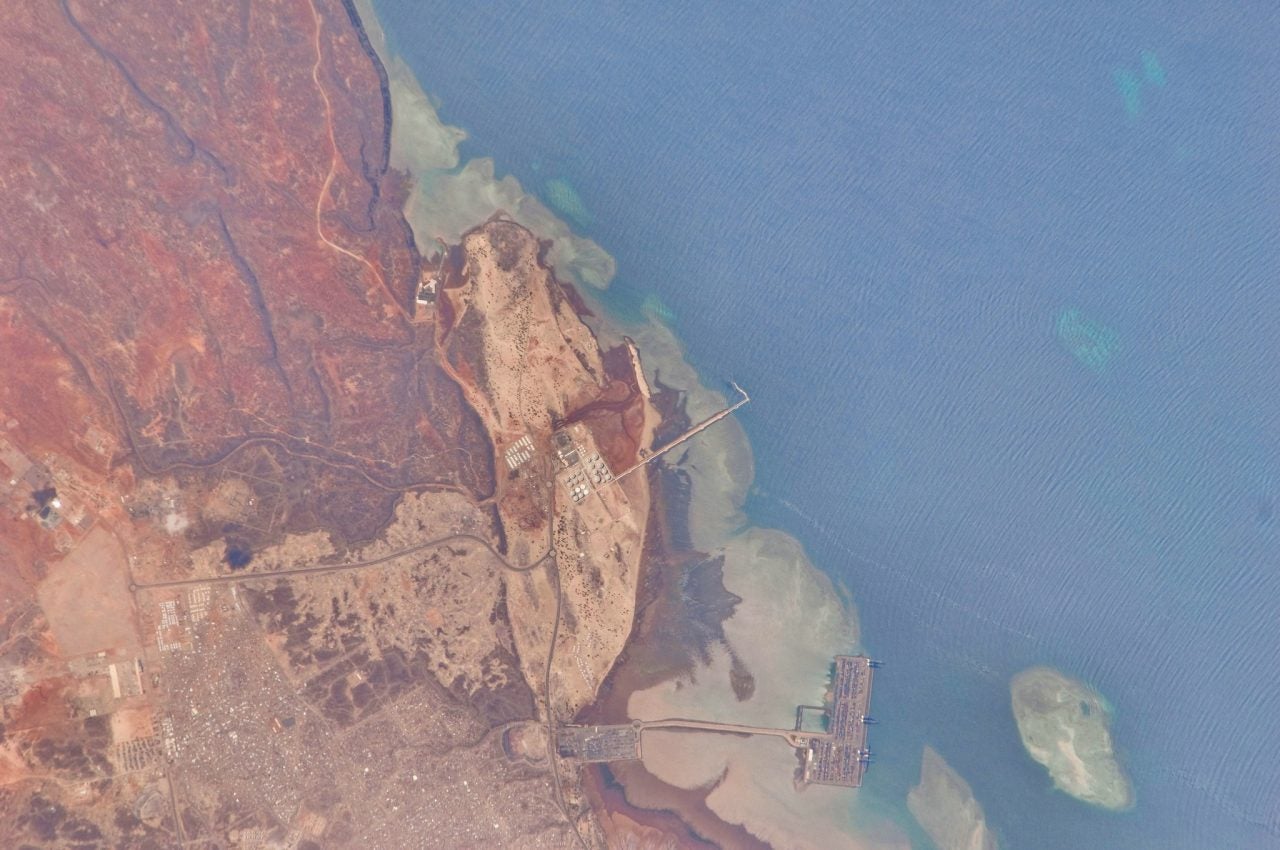
Overlooking the Red Sea and the Gulf of Aden with direct access to the Indian Ocean, Djibouti is one of East Africa’s most strategically located countries when it comes to shipping.
Situated in the Horn of Africa between Eritrea, Ethiopia and Somalia, the country’s $2bn economy is heavily reliant on the maritime sector. According to data from the United Nations Conference on Trade and Development, Djibouti’s growth rate for merchandise exports went up by 2.4% in 2019, whilst its fleet’s growth rate increased by 42%.
Among the reasons for this growth is massive infrastructure development carried out by the country in the last decade. Over the years, Djibouti has built new specialised port infrastructure to relocate the activities of the historical port in a bid to regenerate shipping in the region.
Once industrial activities are moved to the country’s other ports – including Tadjourah and Ghoubet – what will the historical Port of Djibouti look like in 30 years?
Inside the Djibouti port regeneration project
Initially built in 1888, the historical port of Djibouti is set to undergo a renovation project that was announced by the Djibouti Ports and Free Zones Authority (DPFZA) on 8 October.
The project – inaugurated with a ceremony that included Djibouti’s President of the Republic Ismail Omar Guelleh – will turn the port into an international business district called the East Africa Special Business Zone.
Works will take place in six phases, the first one set to be completed within five years with an investment of $513m and occupying a site area of 220,500m2. Named the International Demonstration Area, the first phase will see the construction of an exhibition centre, a conference area, a hotel and apartments.
The other five phases will involve the creation of cultural and business facilities, including a centre to promote the cooperation between China and Djibouti under the Belt and Road Initiative.
Coined in 2013 by Chinese President Xi Jinping, the China Belt and Road initiative aims to connect Asia with Africa and Europe through six land and sea corridors. In Djibouti, part of the funding from the initiative was allocated to building a railway between Djibouti and Eritrea’s capital, Addis Ababa. The line opened last year and significantly reduced travelling times between the two countries.
Driving social and economic development
With the historical port’s regeneration, Djibouti is eager to invest in its social and economic development, maximising its geostrategic position while diversifying the economy and attracting foreign capital.
The port’s regeneration project is set to implement the Port-Park-City model, promoting the full integration of Djibouti’s ports, industrial parks and services.
“The regeneration of the historical port of Djibouti is the natural continuation of Djibouti’s recent developments,” commented DPFZA chairman Aboubaker Omar Hadi.
“This project implements the Port-Park-City concept, which refers to the integration of ports, industrial parks and services. The ports are a key node in the transportation of goods, the international free trade zone brings added value to these goods, and this new business district will facilitate the development of services, particularly in the financial sector.”
Creating 27,000 new jobs, the project will also develop human capital and expertise, considered vital for the country’s economic growth.
Vision 2035: the bigger picture
The historical port regeneration project is part of Djibouti’s Vision 2035, the country’s development strategy to maximise its strategic position and expertise in the maritime sector.
Set out in 2014, the government-driven strategy involves several society stakeholders and is based on five pillars, including peace and national unity, the need for a diversified economy and investments in human capital.
According to the vision, Djibouti intends to triple its per capita income by 2035 through a sustained and accelerated GDP growth programme based on the development of ports and logistics.
To do so, the country developed the Doraleh multipurpose port in 2017. Located 5km west of the capital Djibouti City, the port has become one of the most modern hubs in Africa, hosting ships with a deadweight tonnage of up to 100,000.
The ports of Ghoubet and Tadjourah were also developed as part of Djibouti’s strategy to relocate activities from the historical port. A supplement to other ports, Ghoubet and Tadjourah are situated 100km west and 180km north-west of the capital respectively and serve as multipurpose ports designed to handle the production of salt and potash.
Ports are not the only focus of Djibouti’s development strategy. In 2018, the government opened the Djibouti International Free Trade Zone, where users can operate without incurring taxes such as property or income. The trade zone, to be completed in ten years, is expected to become the largest of its kind in Africa.
The country is also developing the Djibouti Damerjog Industrial Park, a petrochemical base expected to boost industrialisation, not only across Djibouti but East Africa as a whole.
The future of Djibouti’s ports
Building up from the development of recent years, projects such as the renovation of the historical port will continue to enhance Djibouti’s maritime supply chain, which is especially important during these uncertain times.
Despite the challenges faced during the Covid-19 pandemic, traffic through Djibouti’s ports continued to increase due to a growth in digitalisation, with ports increasingly relying on digital systems such as the Djibouti port community system (DPCS).
Launched in 2018, the system – the country’s single point of entry for ports that allows users to track cargo – turned out to be useful as social distancing measures were implemented around Djibouti.
Ports have always played a prominent role in Djibouti’s economic and strategic development and will continue to be at the heart of operations, strengthening regional integration and driving the country’s economic growth.



